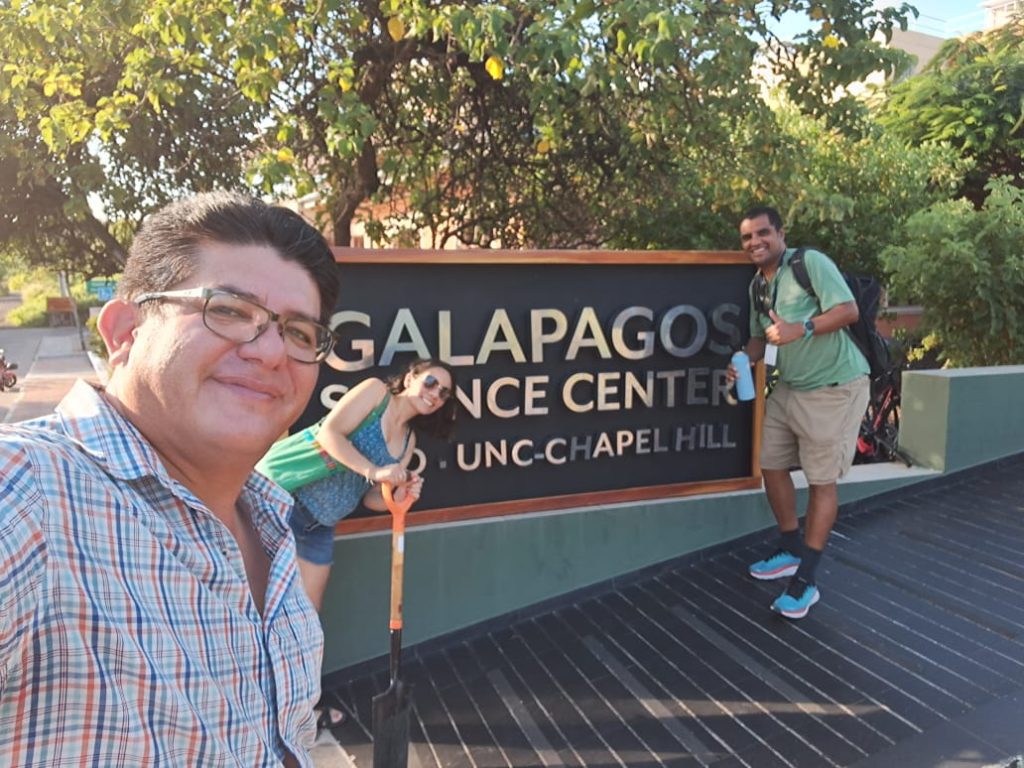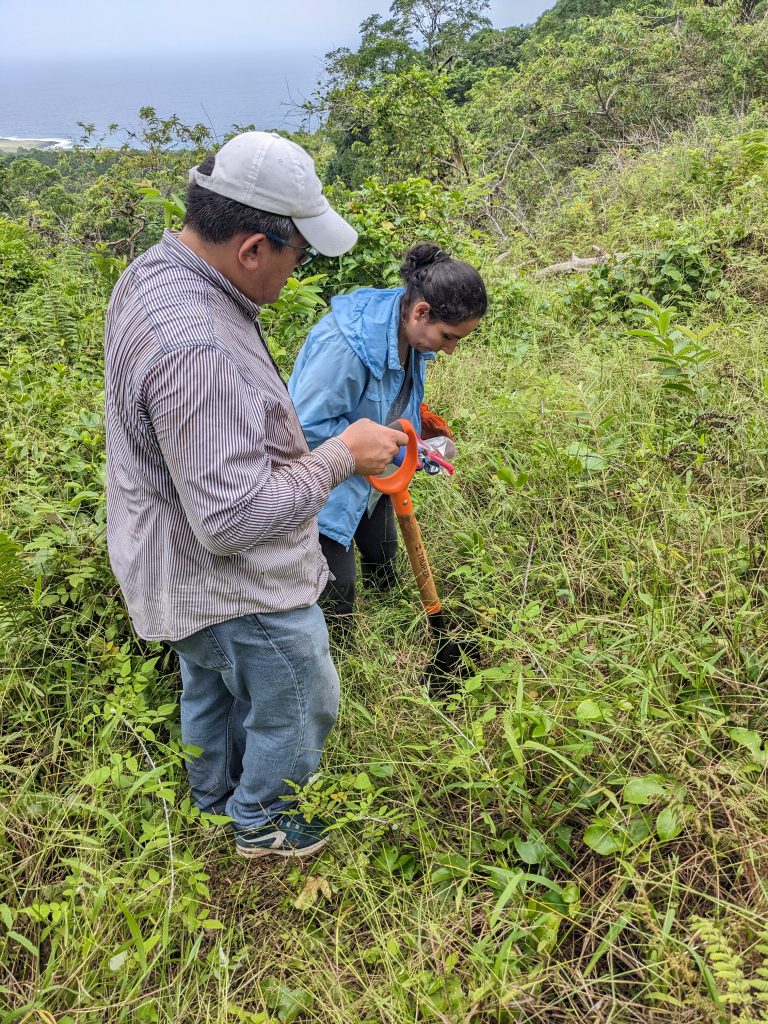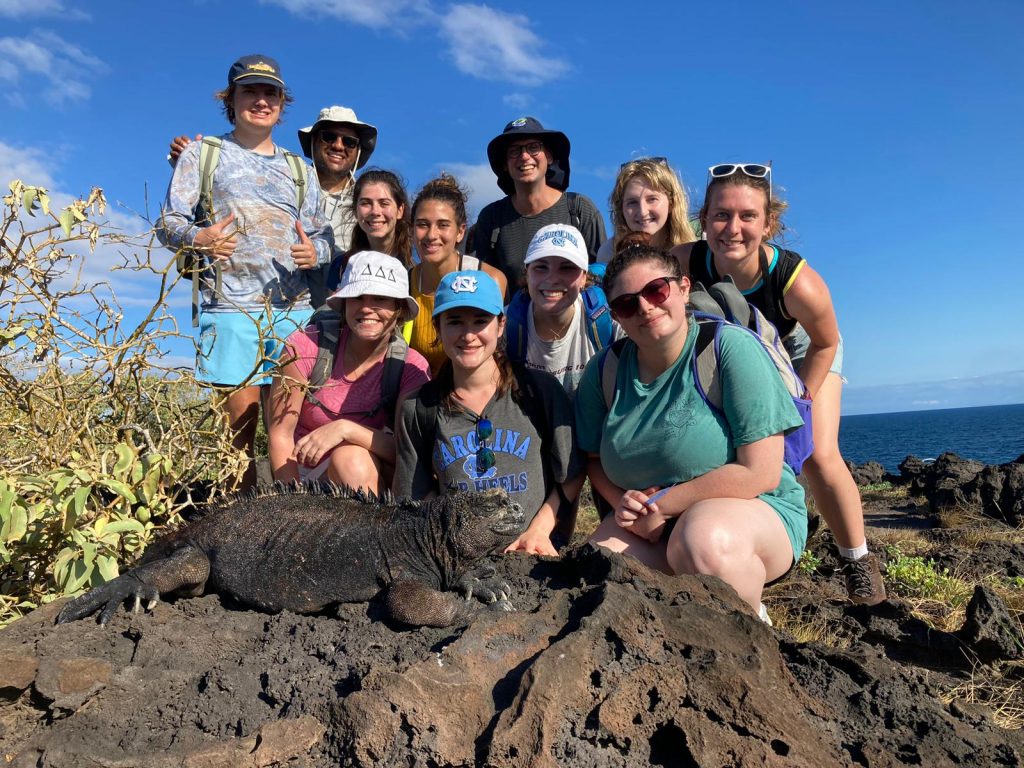Thanks to the funding of a Center for Galapagos Studies seed grant, Senay Yitbarek, Peter Thacher Grauer Fellow and assistant professor in the department of biology in the College of Arts and Sciences, traveled to the Galapagos this summer to conduct research on host-pathogen dynamics on San Cristobal Island.

The goal of Yitbarek’s research is to understand how pathogens, particularly viruses, have arrived in the Galapagos and what part they’ve played in the success of invasive plant species, which threaten the biodiversity in the Galapagos’ unique ecosystems. For this first round of research, Yitbarek has focused on one invasive plant species, Rubus niveus, and one island in the Galapagos archipelago, San Cristobal.
According to Yitbarek, Rubus niveus – commonly known as the blackberry plant – is a particularly “nasty” species: it’s armed with sharp thorns, grows rapidly, and produces significant biomass that overwhelms native plants where it grows. This latter feature in particular makes it a perfect candidate for study since it poses a significant threat to native plant species.

Yitbarek ultimately looks to help protect the Galapagos Islands’ natural biodiversity and ecosystems, elements that drew him to this research in the first place. While this summer was Yitbarek’s first visit to the Galapagos, he has been conducting research on island ecosystems, largely in Puerto Rico, for years.
“Island ecosystems kind of function as a microcosm of what might potentially happen on the mainland continents,” Yitbarek explained. “You have lots of organisms that arrive there, and a lot of the biodiversity is transient and not necessarily established: it’s typically lower than in the mainland. That kind of gives us an initial perspective of how these ecological communities might assemble as you find endemic and native species alongside invasive species competing for a niche.”
From the field to the lab
Yitbarek’s research methodology is a three-part process. The first step was for Yitbarek to collect samples of the blackberry plant – the leaves, the branches, and even the soil – from various sites across the island; in this case, Yitbarek focused on farms within the bounds of the Galapagos National Park.
These farms offered more than just blackberry plants: they offered farmers, with personal knowledge of the dynamics driving the farms’ individual ecosystems.
“The farmers provide us insights into the ecological complexity on their farms,” Yitbarek said. “They have a lot of knowledge, and tapping into that knowledge is very important for our research.”
In return for their insights into the farms’ different ecological dynamics, Yitbarek looks forward to being able to share the results of his research with farmers, particularly ways that farmers can use natural ecological processes, rather than pesticides, to control the spread of invasive plant species such as the blackberry.
After the collection process, Yitbarek sent his samples off to the laboratory of his research collaborator Antonio León, professor of agronomy engineering at USFQ and adjunct professor of biology at UNC, who is currently conducting RNA and DNA analyses on the samples to reveal what viruses have made the blackberry plant their host. Also instrumental in this process has been León’s research technician, Noelia Nathaly Medina. Both León’s and Medina’s collaboration is a testament to UNC’s and USFQ’s long-standing strategic partnership in Galapagos.
The final stage of Yitbarek’s research will involve creating cultures of the identified viruses and using the blackberry seedlings to observe the interactions between the different viruses and the plant host. This will allow Yitbarek to determine what effect different viruses have on the blackberry plant, which will ultimately inform him about ecological processes that can potentially control the spread of the invasive plants.
Study abroad students gain research expertise
In addition to conducting research, Yitbarek taught a 5-week ecology course through the Study Abroad Office in the College of Arts and Sciences while in the Galapagos. During the first week of the course, he was joined by Pieter Van’t Hof, a biology professor at USFQ, who co-taught part of the class.

The class culminated in a final project in which Yitbarek’s students gathered samples from different farms across the island, including some of those that provided Yitbarek blackberry samples for his research, and learned how to conduct the RNA and DNA analyses that Yitbarek also uses in his research.
While completing the first steps of his research and leading an entire class in the span of a single summer is a daunting feat for many, Yitbarek is already itching to return to the islands. Part of the appeal is his research; part of it is the view.
“[There’s] the unique situation of where you can do research in this unique place but then also, while you’re working hard, you can just take a break and go to the beachfront of the Galapagos Science Center and eat an ice cream while staring at the sea lions and watching the sun going down. It’s quite amazing.”
By Andy Little ‘24, Center for Galapagos Studies
